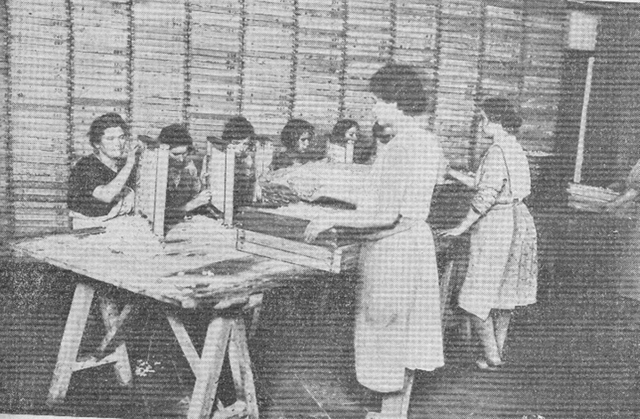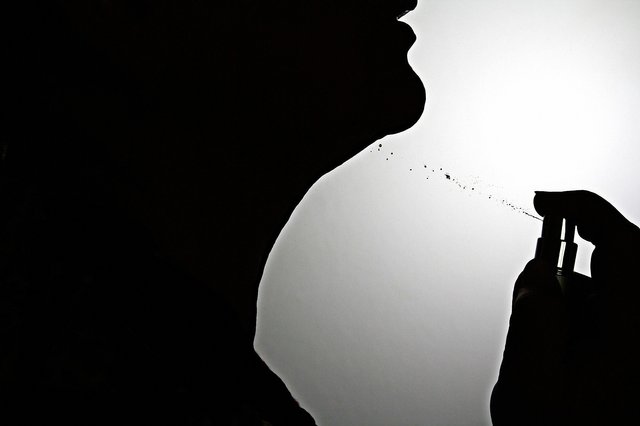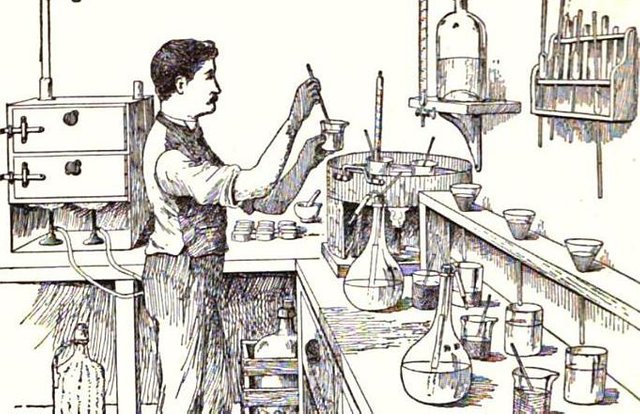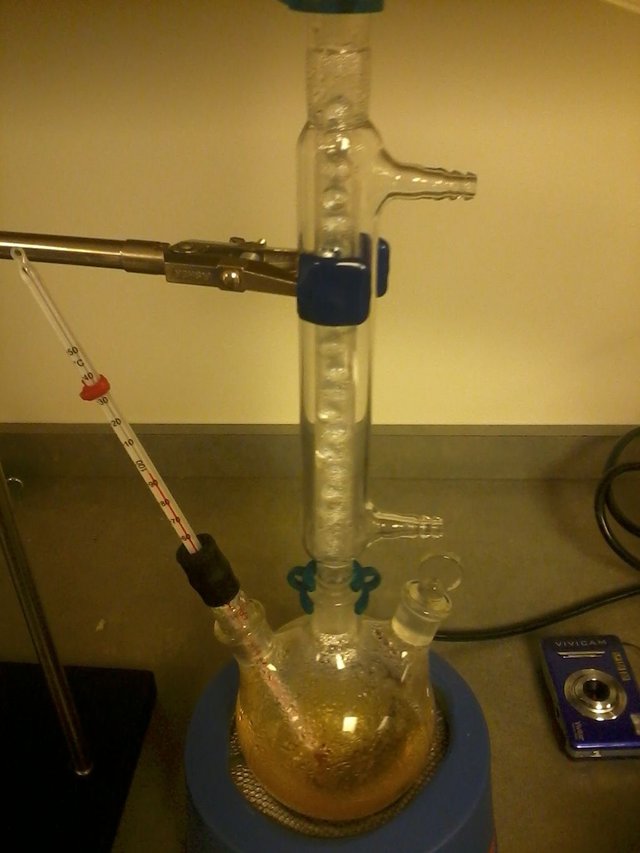A penetration to the chemistry behind the making of your perfume
It’s good to be here today, a wonderful day to my dear Steemians and thanks for the love shown in my last article. I’m quite positive I’d grow quickly in the STEEMSTEM family. I hope you read and followed all the instructions on my last post (how well to be a good sleeper, chuckles)? If now, you sleep well than the times past, it gives me great joy. I have had my fair share of the piece and I can tell you I’m more than happy with my sleep quality. You can read here if you haven’t seen and are interested in going through it here. If you read my last post, then I can’t wait as promised to give you another gift. I’m a man of my words. The gift is on/about how much technology has revolutionized the perfume industry.
As you may know, the average individual (man or woman) is a lover of good scent or fragrance. People love to overshadow their original odor by using perfume. The perfume replaces the natural scents that exist in our environment. Growing up, I had issues with people. It took me a while before I could figure what was really going on. I wanted to be around people and I felt they should want to be around me too but I was wrong! What went wrong? Was I too young? Had I not learnt some lessons? Does ego have a place in this? I came to realize I actually didn’t have an appealing body smell. Then, I sprung to action. My dad was and is still a lover of perfumes, so I went straight to his wardrobe to get a handful (I was too in a hurry in order not to get caught that I did not check the name). I wanted it so badly and I eventually used it. From that day, people noticed and even told it to my face that they loved my perfume. (It is a bit rare to see who would tell you how nice you smelled in this part that I am here, they would only ask for the maker of your perfume. This could be pride, you know? *On a lighter note though)
In this post, I would be showing you how ingredients are gotten, cooked together and various chemical mixture or separation that is been used to get a particular formula for a perfume needed. Also, I will make mention of the blending and aging processes.
If you are a Christian or if you’ve been told the story of the birth of Jesus, you should be quite familiar with what perfume is and if not, you probably didn’t think much or haven't heard about the story. When the baby was born in Jerusalem, three wise men came with gifts and the gifts were mostly perfumes in things like myrrh and frankincense. These perfumes were majorly used then for religious activities or let me say ceremonies. The earliest usage of perfume dates back to more than 4000 years ago and the Egyptians were the first modern world to use it. They used perfumes for rituals and most often big ceremonies. Perfume soon spread to other countries like Italy, Greece, and some early European countries. The Greeks caught the traveling wave of perfume via migrators and it got passed on to the Romans in Italy, England, France and other countries by crusaders.
Perfume is most of the time, a liquid substance gotten from flowers like roses, jasmine, violet which makes the possessor smell nice when applied on the skin. Chemically, perfume is defined to be a liquid which houses 2% water, less than 90% alcohol (Ethyl Alcohol i.e C2H6O), and fragrant oils (ranging from 10%-40%) that disappear in a normal temperature (room temperature).
You may want to wonder why alcohol is used in perfumes. This is why
Ethyl alcohol (C2H6O) is often used because of its cooling effect and how fast it evaporates (you don’t want to use a perfume that drips slowly from your armpit after it has been applied). C2H6O famously breaks down the ingredients in perfume and at the same time, also merge oil and some other products. The process of the olfactory structure is made possible by the alcohol in that it helps the perfume diffuse and attain the note phases in the olfactory structure.
What then is olfactory structure? What are notes?
A typical perfume has an olfactory (sensory) structure. What’s olfa…? This is associated with the sense of smell. It has to do with how your nostrils perceive odor or scent. The structure comprises of three parts which are; head or top note, heart note, and base note. They are characterized by the scent or how well they last on the skin. The headnote is the effect or picture gotten when the perfume is first applied and here, the molecules formed evaporates fast where it is applied while the heart note as the name implies is the heart of the perfume. The heart note is the fragrance you smell after you might have applied the perfume, the smell stays for more than 6 hours. Lastly, the base note is the part of the structure that makes the perfume last the whole day. The base note has to do with the deepness of the perfume.
Perfume was used by the rich or the elite in the 16th century to ensure they had a good ooze of smell. Also, perfume in the early days was taken as a penchant for healing. Physicians in Europe would cover victims of plague or infections in the mouth and the nose with bags of perfumes to heal them. They understood that when the particular scent or fragrance is inhaled, it heals them. On the other hand, who wouldn’t like something that smells so awesome provided he/she can afford them? This is the case of kings and royalties that had perfume in use in the early stages of its unraveling. A particular king perfumed the whole of his palace and made sure every visitor he comes in contact with had a perfume-bath. This, the king’s act is to show how highly he esteemed our precious oil.
Naturally, perfumes are made from plants but to boost sales and ensure there was mass production, an artificial way of producing the essential oils that are needed came to limelight. The artificial perfumes were produced using a form called synthetic chemicals. The very first synthetic perfume to be made was from benzene (the simplest form of an aromatic compound) and nitric acid. It was undoubtedly called nitrobenzene. It served a great purpose in that it was adopted in the soap industry and added to the industry’s product to give it a distinct scent. In a simple chemical term, the synthetic chemicals are taken to the laboratory where they reproduce the fragrance and scent like the plants would do. Well, since I’m not considering the types of perfume or the deep part of the synthetic making of perfume, I’d move straight to extraction methods used in perfumery. I know you can’t wait!
The various extraction methods include and are not limited to maceration or solvent extraction/CO2 extraction, water distillation/steam distillation, enfleurage, and expression. I would talk about them one after the other right in the next sub-topic.
As a new perfume making industry interested in starting out a brand or an existing industry who wants to make a new brand; you walk straight to your company-based chemist or a chemist who knows about perfumes. As the perfumer or decider of how you want the perfume to scent, you pour your mind out and the chemist comes up with a formula. This formula is the stage that gets to bring your unseen perfume to you. From the formula, the chemist chooses the flower(s) and other ingredients that best suit the taste of the company. Once this is concluded, extraction of the fragrance is done and that leads us right here.
Extraction (fragrance) is the separation procedure of usable (aromatic compounds) materials from natural existing materials like flowers.
Water Distillation
As you may know, water distillation is simply the process of heating a liquid to make it pure in which it becomes gas in the process. The gaseous substance is left to cool and the drop of liquid formed is collected. The same is applicable to flowers. The flower such as jasmine or rose is soaked inside boiling or heating water. After boiling, the steam condenses to a liquid and is allowed to cool and separate. The condensed water or liquid is what is usable and called the aromatic compound. This is the earliest separation method recorded. The only disadvantage is that it does not extract the whole essence of a flower compared to maceration.
Steam distillation is almost of the same process. Further explaining the process, a container that carries the raw material or plant, usually large is steamed. Steam is applied to the plant material via an inlet. This therefore releases the aromatic compounds and immediately transforms it to vapor or gas. The aromatic compound turned vapor then moves to the condenser where it’s cooled and returns back to liquid. The aromatic compound are always associated with by-products and it is right from this condenser they drop and enter a container known as the separator. Finally, in the condenser you have your essential oils and water. The oils float while the water maintains ground level. Siphoning is then done to get your required product.
Maceration or Solvent Extraction
Maceration in pure and English term refers to making something usually hard soft by immersing in liquid. Chemically, the liquid here is called solvent. Maceration is considered to be the often used and cheapest of the methods in separation. What are needed in this separation technique is a solvent like dimethyl ether or ethane, raw materials i.e flower. When all these are available, the process can start. The flower is immersed inside ethane for example to break down the aromatic contents. Fragrance that goes to the gaseous form so easily when distilled is better off when macerated. CO2 extraction is the newest procedure in the separation process. Since CO2 is a nonreactive solvent when applied, the fragrance gotten almost takes the scent of the flower which is the raw material. CO2 extraction is sometimes used instead of steam distillation because of the varying properties like temperature and time. Another advantage of CO2 extraction is that there is usually a thicker extracts, equally meaning a more scented perfume would be produced.
The process of CO2 extraction goes thus;
Carbon dioxide or carbon II oxide transforms into liquid when pressurized. After pressurizing, it is released to the chamber that holds the plant material. CO2 as a solvent separates the essential oils from the raw material while the former dissolves in CO2. Carbon dioxide is unpressurized or returned back to its normal state where it evaporates and we are left with the essential oils.
Expression
This form of extraction is particular to the citrus family. This is most likely the crudest way of getting essential oils. The raw material used is crushed until the fragrance/essential oils are gotten. The oils are obtained after the citrus had been soaked in water (usually warm). The oils obtained are called hesperidic oil. This method is most effective for the fruits in the citrus family because the essential oil in citrus fruit has a reputation of been largely present. Therefore, it is economical this way. Back in those days, the squeezing was done using hands but today, we have a mechanical crusher that performs this job.
Enfleurage
Enfleurage uses warmed fats and sometimes grease to extract the oils present in plant and was first used by Piver in 1750 in France. This method adopts the idea that fat absorbs odor. The separation technique goes this way. Glass sheets or plate are held in wooden frame and are submerged with refined fat which are odorless. The fat covering the wooden frame is allowed air to venture into it. The flower intended to be used like jasmine is then placed in each plate of the frame at a designed time interval. There is a scheduled duration a flower must use on the sheet. When the duration is over, it is replaced by a freshly caught flower. This method is the least practiced because it is expensive and it requires a lot of processes and human power. Not more than a company or two still practices this method as it dwindles.

After the whole extraction process is done with, Chemists move on to blending the ingredients that would eventually give the end product- perfume. The extraction procedure is not much of a work like blending the oils and other necessary things to form the perfume. The main reason for blending the oil is to form a SCENT targeted by the perfumer or the industry. In blending, they follow the formula they’d come up with in the beginning. Working on a particular formula could take years because of a lot of laboratory tests and also numerous materials to achieve, but once it’s achieved, it becomes a trademark for the perfumer. This is where the alcohol comes to play.
Once the scent is ready, it is combined with a high percentage of alcohol and a little water usually lesser than 2%. The major role alcohol plays is to note whether it is a perfume, a cologne or eau de toilette (it’s pronounced eu-de-twailet). Eau de toilette is simply a perfume that has a high percentage of water and smells less.
Therefore, a perfume is a combination of Essential Oil, Scent, Alcohol and Water
Aging process
In human’s belief, we believe the more aged a person is, the wiser they are too. This isn’t just applicable to human but also to perfume. Yes, you heard me right!
After the extraction, blending and mixing with alcohol is all over with, the perfume is usually stored in tanks (cool and with no contact with light) to mature the content. This process is called AGING and it takes months to years to come up with the intended solution. The main aim of aging is to ensure the alcohol blends really good with the essential oils. When the process is finished, the Chemist or the perfumer goes over to smell it. If it reaches their standard, they start manufacturing and if it does not, they readjust and ensure they have the required result.
It is worthy to note that a fine and neatly finished perfume must follow the standard olfactory structure which as mentioned above is the top note, heart note, and the base note.
The words that is been used alongside perfume is cologne. Cologne as is interchangeably used in the perfume’s world is in a way correct. Cologne is a perfume made or produced for a targeted gender which is the male gender. I think I stand corrected to say the privilege has been abused. Right now, anyone can use cologne. A fashion police would have made some amendment if truly they existed. Smiles!
Also, there are animal products that are capable of making perfumes too like ambergris from a sperm whale, musk from a male deer and castor from beavers. Due to the fact that these animals are been endangered while extracting their oils, chemists have stuck to the use of plants products or the synthetic way of making perfume. Apart from endangering them, it is difficult and costs quite some bucks to extract the oils from the animals.
Majority of perfume users use it for a whole lot of reasons known to them alone. Perfume reminds some people of who they miss or lost. Using the deceased’s favorite perfume gives them memory they can at least live in. This alone could be a therapy that has held someone’s heart tight. The most usage is based on self-esteem. If you use a brand of perfume on you, you tend to move joyfully or even move closer to people especially guys moving close to ladies (Ladies and women love a guy or man that smells well, take that as a cheat from me). I have gotten compliment for smelling nice and I must tell you, I feel proud.
Finally, perfume, fragrance and essential oils are all different though they work hand in hand.
Thanks for reading. Your sincere comments and questions are welcome.
REFERENCES



This is an educative post. I have added to my knowledge. Thanks, @michealwrites
Thank you for your kind comments @rubies. I'm glad you were able to learn few things.
I guess I can start making my own perfumes after reading your explicitly written article about perfume making. 😂 😂
You are free to. Be sure to get a certified Chemist by the way and a scent expert in which I'm one.
Nice one once again from you bro! When should we start production, since we know almost everything about making it..
Nice research you did here.
Smiles. Virtually all nicely written posts I relate to on here get me thinking nothing is actually impossible. Truly, we kind of have a basic knowledge about it but we need Chemists or Biochemists, a large garden and the moneybags like you and @addempsea. Hahahahahaha
Thank you @mrbreeziewrites for reading through.
Lol. All I see is @addempsea the money bag🙌🙌
Always a pleasure
Hehehe. The money isn't just one-sided.
Which addempsea?
What money?
Lol. Calm down. I believe you have one money hidden somewhere since we want to start the mass production. 😉
I don't know what you are talking about 😋😋
Hehehe. You'd know when the plan is official. 😉
Gbaun!